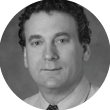Perspectives From the Dark Ages
A seasoned surgeon’s thoughts on the evolution of technology and how he uses it.

BY RICHARD TIPPERMAN, MD
I’ve heard it said that you date yourself generationally if you remember life before microwaves and answering machines. In terms of information technology, you certainly date yourself if you remember life before the internet, let alone life before smartphones.
These technological advances have given us access—in mere seconds—to information that was previously available only after exhaustive searches performed with physical card catalogs or extensive in-person searches of literature. Now, with just the click of a few keys on PubMed or via a general online search engine, clinicians can access a wealth of information. This has completely changed how we all learn. For physicians, it changes how we learn both during residency and in our continuing education once in practice.
I suspect that generational differences still exist in how these technologies are used. My 22-year-old twin daughters, both of whom are software engineers, like to point out that people of my generation text on their smartphones using one finger; they and their peers, on the other hand, use a dual-thumb strategy. Additionally, I never realized that I dated myself by putting two spaces after a period when concluding a sentence. Those who grew up with only word processing will place only a single space after a period.
HOW TECHNOLOGY IS USED
In the Dark Ages
Back in the dark ages (ie, when I was a resident), I did not purchase many textbooks because it was clear to me—even back then—that most texts were out of date by the time they were published. Instead, I preferred to read journal articles. There were some texts, however, that contained such fundamental or overarching information that I did actually purchase them, and I still feel to this day that they were cornerstones of my education.
One popular text during my residency was Duane’s Ophthalmology. One of the selling points of this text was that it was spiral bound, which allowed subsequent updates to be purchased and added to the text in an attempt to keep the information relevant. Even this approach has become outdated with the nearly instantaneous information accessible electronically.
Nowadays
Today, physicians have access to online videos, tutorials, blogs, updates from professional societies, online chat forums, and email threads to keep them up to date and informed. Although I have a Kindle (Amazon), I personally still prefer to read a physical book rather than an e-reader or laptop; I find it much easier to jump around or refer to nonsequential sections or figures in a physical book. In terms of timeliness, however, it’s hard to beat electronic avenues for obtaining up-to-date information. For me, that involves using a web browser. I dislike reading for extended periods on my smartphone, and a tablet still wouldn’t replace the laptop that I carry with me everywhere, so the tablet would just be a redundant device.
I’m not a complete Luddite, however. I review a number of ASCRS chat lines each day and find that access to online information helps me perform the duties of practice on an almost daily basis.
Although many find online videos helpful, I much prefer to read a blog post rather than watch a video to learn something new. I think reading a blog post allows more efficient transfer of information, and, again, it is easier for me to jump around and search information in a blog than in a video. One area in which videos reign supreme, however, is in teaching and reviewing surgical techniques. I find surgical videos incredibly helpful both for learning new techniques and strategies and for reviewing my current approaches.
In the Future
I don’t think electronic dissemination of information will ever completely supplant printed material, journals, or in-person meetings, but it’s certainly an incredibly important part of staying up to date in today’s world.
Perspectives From the Dark Ages
A young surgeon’s experience with the evolution of technology and how it is used.

BY BRENTON FINKLEA, MD
Young ophthalmologists today are part of a unique subset of the population that grew up alongside a revolution in information technology. In elementary and middle school, my peers and I still went to the local library to find sources for reports and presentations. By the time we entered high school, these sources had been supplanted by computer-based software such as CD-ROMs of the Encyclopedia Britannica. As we entered college, more sources moved online, and it became possible to review resources right at one’s desktop. We were a group eager to adapt to these new technologies and were a willing and ready audience for new forms of information exchange.
THE BENEFITS
By the time I entered medical school, I couldn’t understand why only half of our class was attending lectures. One of my classmates gently pointed out that the lectures were recorded and available online, prompting many students to opt for the digital approach.
Technology offered students a wider range of learning opportunities and helped them optimize their potential. As more electronic resources were widely shared, even among medical schools (eg, review packets, study guides, question banks), it appeared that didactic medical education was becoming ever more consistent and standardized across the country.
They say that the half-life of medical knowledge is about 4 years. With such a proximate expiration date, it is essential that we constantly stay abreast of the latest and greatest information available to us. This need has created a market with a surplus of sources and methods by which we can consume up-to-date information. In previous generations, exchange of the latest information was limited to journals, lectures, and professional meetings. With technology behind our sails, the number of sources has exploded, with the aforementioned resources plus electronic journals, newsletters, listservs, message boards, online courses, YouTube and Eyetube videos, blogs, and podcasts.
A RISK
The rapid expansion of information technology and the many platforms on which it can be consumed has brought about a new problem: too much volume.
The volume of educational content available to physicians has become overwhelming. It requires a focused approach not to drown in the flood of information. Physicians must ensure that they consume only high-quality content to avoid getting bogged down.
Individual preferences may lead some physicians to print media, while others may appreciate the convenience of electronic distribution. As we become more environmentally conscious, paper-free versions of periodicals become more desirable.
Many of my peers have found that audio presentations such as podcasts are great ways to use the time they spend commuting to work. New forms of digital media offer other opportunities for multitasking. Whatever your preference, finding a few key sources and staying consistent will ensure that you don’t miss important updates and developments.
SHARING KNOWLEDGE
One of the changes in information sharing is the ability of many physicians to take part in conversations about cases, papers, and current affairs via listservs and message boards. Young ophthalmologists coming out of training, where institutional bias may have led them to approach clinical problems in specific ways, may find it interesting to follow case discussions on specialty listservs, where physicians from a wide variety of backgrounds weigh in with their perspectives.
The internet has made it possible to broaden our community of mentors from a few local physicians to thousands of surgeons across multiple continents. What a world.
FINDING A BALANCE
Given the speed of modern technological progress, there is no telling what the future will hold for the ways we share knowledge. It will be continually and increasingly important for physicians to maintain a balance between the tried and true and the new and improved in this age of information technology.




